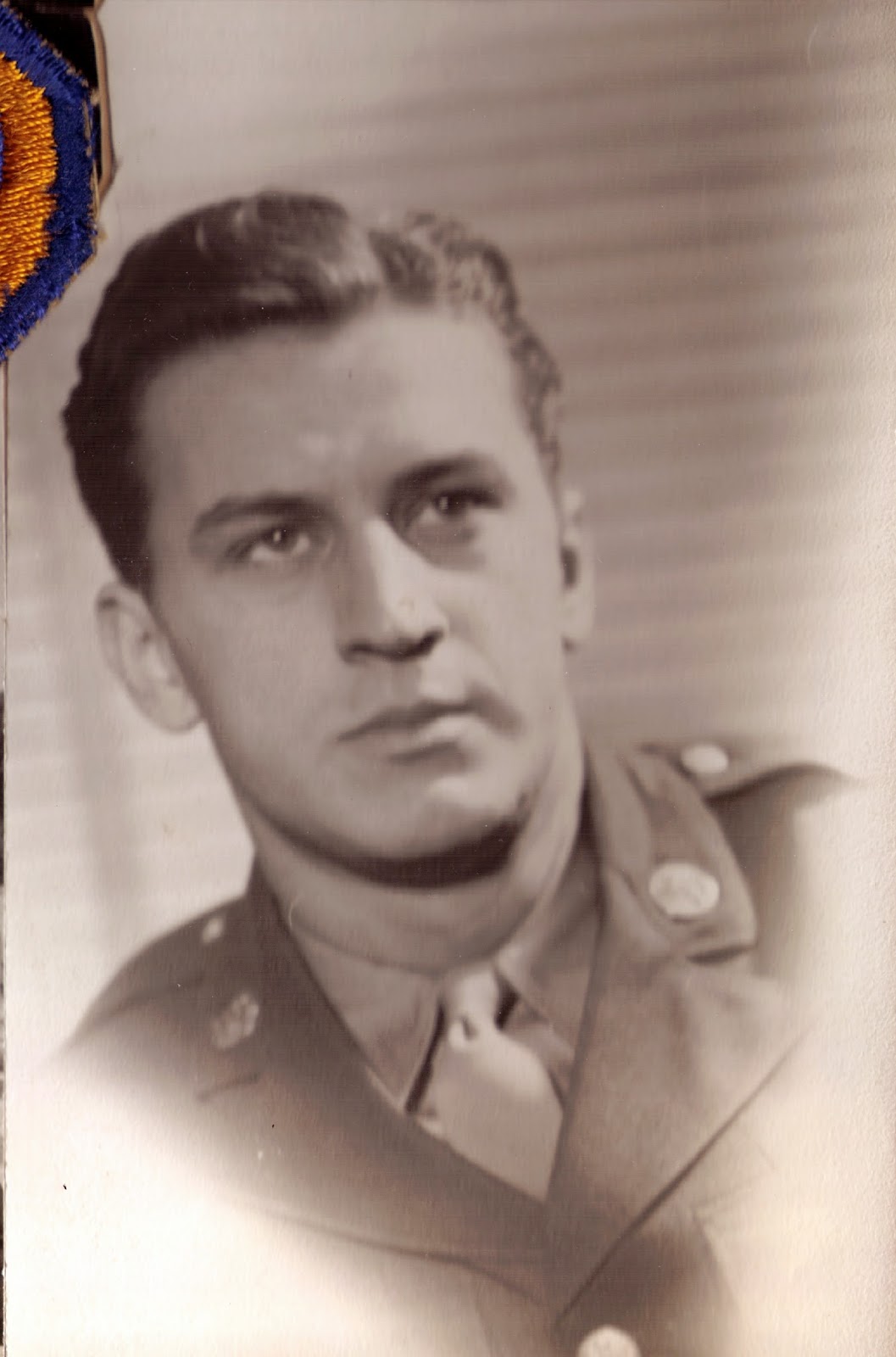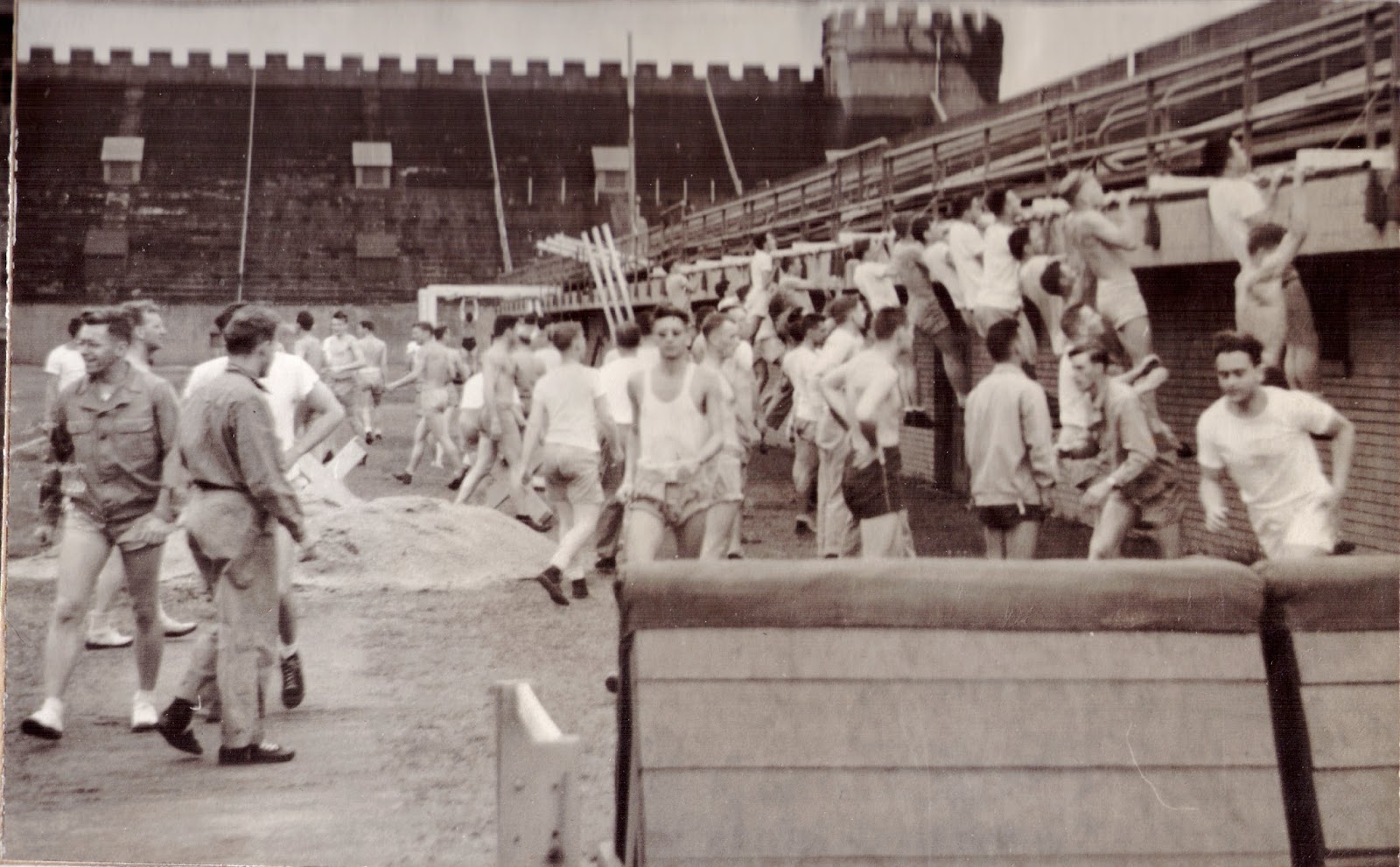We have been following a fairly clear trail so far. Our EJZ's outfit completed Basic at end-November, 1943.
 |
| Nice clear date at the bottom of the Second Company's book. |
The War Department ended the Army Specialized Training Program at end-March, 1944. The men were put into Army Ground Forces, in preparation for the upcoming invasion of Nazi-occupied Europe.
December through March, four months, agrees with the statement typed on EJZ's Discharge Papers, to the effect that he served four months of a 10-month Japanese-language course.
Ten full months would have gone to the end of December, 1944.
Now, although the very next page of the Photobook is all photos of Washington, DC in the autumn or winter, we have evidence of Eugene remaining in Chicago from at least April through August. Here it is:
Next post we will pick him up in D.C., after which things get murkier yet. Right now we can suppose, perhaps, that although A.S.T.P. was formally at an end, Eugene was in a group already earmarked by U.S. Military Intelligence for the land invasion of the Japanese Empire. The Joint Chiefs realized, with dread, that such an invasion was very likely going to be necessary, as the Tojo clique showed no willingness to give up - quite the contrary - even after their irreversible setback at Midway.
 |
| So for some reason he applied to transfer to the class at Ann Arbor, Michigan. They were full up, so he stayed at U Chicago. |
 |
| You've all been wondering where he got those sexy eyeglasses, right? From the U.S. Army, of course: two whole pairs. |
 |
| The point is that the prescription order is dated "27 July 1944." |
 |
| That brings us back to Photobook Page 6. That top-left photoportrait has always seemed a little goofy, but now we have figured it out. |
 |
| But when it is flipped back using Preview (thanks, Jim!) we really see the real Pfc. EJZ, jokester. |
 |
| And we see that his Furlough pass has a date: "31 (Something!), 1944." |
















































